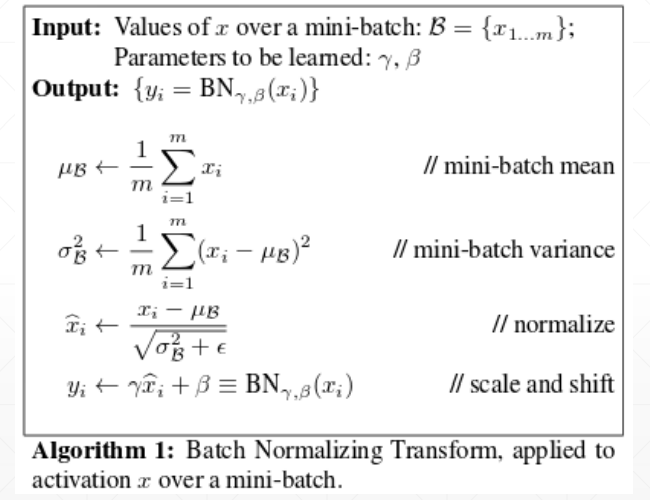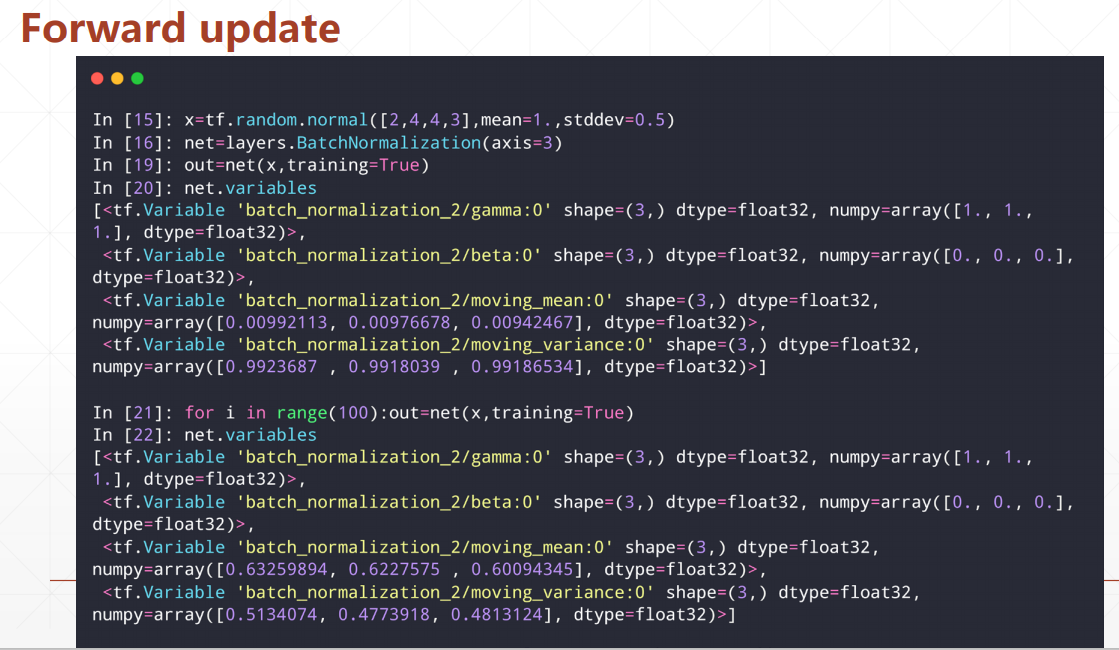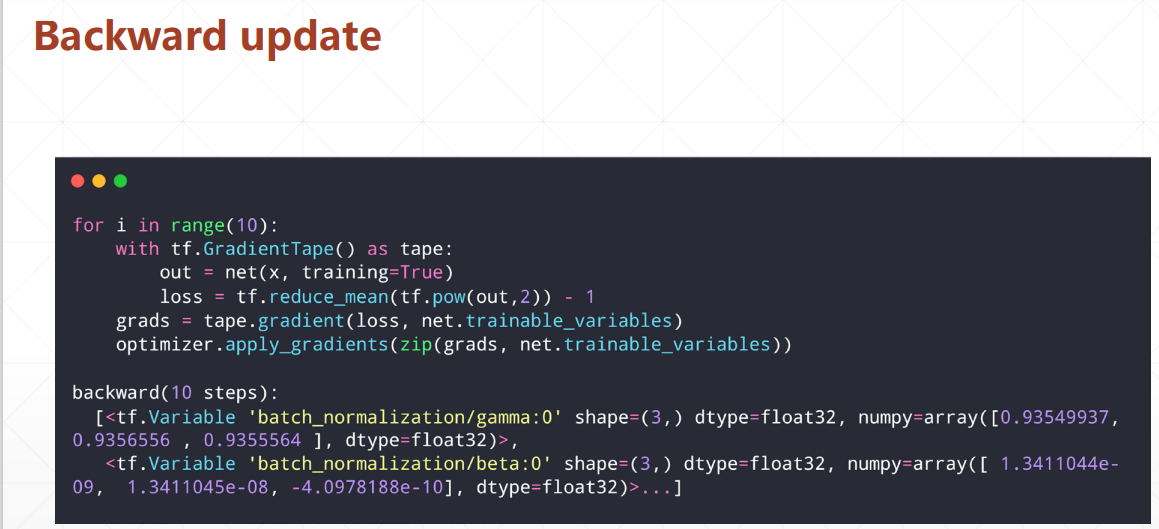一、不进行归一化,某些W变化对loss影响较大

二、进行归一化
1、可以看到,Batch Norm结束后,只得到三个数值,每个通道一个。

2、正常的Batch Norm过后,均值为0,方差为1,但是需要再加一个贝塔和伽马。(B,r)需要学出来。


变成了均值为B,方差为r。
三、用法
1、下面的center是均值B,scale是方差r。最后一个参数用于测试时候。






import tensorflow as tf from tensorflow import keras from tensorflow.keras import layers, optimizers # 2 images with 4x4 size, 3 channels # we explicitly enforce the mean and stddev to N(1, 0.5) x = tf.random.normal([2,4,4,3], mean=1.,stddev=0.5) net = layers.BatchNormalization(axis=-1, center=True, scale=True, trainable=True) out = net(x) print('forward in test mode:', net.variables) out = net(x, training=True) print('forward in train mode(1 step):', net.variables) for i in range(100): out = net(x, training=True) print('forward in train mode(100 steps):', net.variables) optimizer = optimizers.SGD(lr=1e-2) for i in range(10): with tf.GradientTape() as tape: out = net(x, training=True) loss = tf.reduce_mean(tf.pow(out,2)) - 1 grads = tape.gradient(loss, net.trainable_variables) optimizer.apply_gradients(zip(grads, net.trainable_variables)) print('backward(10 steps):', net.variables)